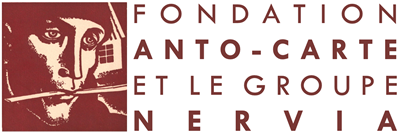Painting (in) Walloon Brabant
30 March - 02 June 2019
In the inter-war period, the western part of Walloon Brabant was home to a number of painters who found peace and inspiration in this rural area, without even rubbing shoulders with each other, even though they were only a few kilometres apart.
In Ittre, Marthe Donas, who had distanced herself from the international avant-garde and abstraction and found herself quite isolated, opted for allusive figuration, sometimes tinged with cubism. A few friends who had settled in Wauthier-Braine (Anto-Carte, Frans Depooter and Andrée Bosquet) reaffirmed classical values and emphasised mastery of the craft.
In 1922, Marthe Donas, who had married Harry Franke, the nephew of her first art teacher, left the Paris region to spend the summer in Ittre, at Château Bauthier, a large house belonging to her husband's family. She moved there the following year and lived there until January 1927.
Cut off from the Parisian avant-garde and isolated from the Belgian art world, she abandoned abstraction in favour of stylised figuration. Her interest focused on the hilly landscape of Ittre and the surrounding area, which she translated into small, poetically naive landscapes, scenes of everyday life and still lifes often composed of bunches of flowers.
A few years after the end of the First World War, a number of painters of Montois origin moved to Walloon Brabant. Anto-Carte (1886-1954), Frans Depooter (1898-1987) and his wife Andrée Bosquet (1900-1980) lived more or less regularly in Wauthier-Braine. Sometimes referred to as the "Hain painters", they were joined by other artists such as Léon Devos and insurance broker Léon Eeckman, with whom they founded the Nervia Group in 1928.
In 1933, Anto-Carte joined his friend, the painter Frans Depooter, who lived in Wauthier-Braine with his wife. He had a house built there in keeping with his views. Often described as a "picture painter", Anto-Carte was passionate about depicting people, showing them through the realities of everyday life in a spiritual and idealised dimension: working in the fields, the villages of Walloon Brabant with their hedgerows and thatched cottages.
Most of Frans Depooter's works illustrate the landscapes of the Hain valley: hamlets and isolated farms, wooded hills, the countryside around Wauthier-Braine. The artist observes the changing nature of the landscape depending on the atmosphere and the time of day or year. Her half-tone landscapes, bathed in nuanced light and discreet sensitivity, have earned her the nickname of "the singer of Walloon Brabant".
The family home is Andrée Bosquet's main source of inspiration. Her favourite subjects are still lifes (bowls of fruit, bouquets of flowers) and portraits. Her candour-filled paintings are bathed in white light.
The exhibition brings together works from public and private collections, some of which have rarely or never been shown to the public.
In addition to the exhibition, walking tours have been designed to take visitors to the places that once inspired these renowned artists.
In Ittre, Marthe Donas, who had distanced herself from the international avant-garde and abstraction and found herself quite isolated, opted for allusive figuration, sometimes tinged with cubism. A few friends who had settled in Wauthier-Braine (Anto-Carte, Frans Depooter and Andrée Bosquet) reaffirmed classical values and emphasised mastery of the craft.
In 1922, Marthe Donas, who had married Harry Franke, the nephew of her first art teacher, left the Paris region to spend the summer in Ittre, at Château Bauthier, a large house belonging to her husband's family. She moved there the following year and lived there until January 1927.
Cut off from the Parisian avant-garde and isolated from the Belgian art world, she abandoned abstraction in favour of stylised figuration. Her interest focused on the hilly landscape of Ittre and the surrounding area, which she translated into small, poetically naive landscapes, scenes of everyday life and still lifes often composed of bunches of flowers.
A few years after the end of the First World War, a number of painters of Montois origin moved to Walloon Brabant. Anto-Carte (1886-1954), Frans Depooter (1898-1987) and his wife Andrée Bosquet (1900-1980) lived more or less regularly in Wauthier-Braine. Sometimes referred to as the "Hain painters", they were joined by other artists such as Léon Devos and insurance broker Léon Eeckman, with whom they founded the Nervia Group in 1928.
In 1933, Anto-Carte joined his friend, the painter Frans Depooter, who lived in Wauthier-Braine with his wife. He had a house built there in keeping with his views. Often described as a "picture painter", Anto-Carte was passionate about depicting people, showing them through the realities of everyday life in a spiritual and idealised dimension: working in the fields, the villages of Walloon Brabant with their hedgerows and thatched cottages.
Most of Frans Depooter's works illustrate the landscapes of the Hain valley: hamlets and isolated farms, wooded hills, the countryside around Wauthier-Braine. The artist observes the changing nature of the landscape depending on the atmosphere and the time of day or year. Her half-tone landscapes, bathed in nuanced light and discreet sensitivity, have earned her the nickname of "the singer of Walloon Brabant".
The family home is Andrée Bosquet's main source of inspiration. Her favourite subjects are still lifes (bowls of fruit, bouquets of flowers) and portraits. Her candour-filled paintings are bathed in white light.
The exhibition brings together works from public and private collections, some of which have rarely or never been shown to the public.
In addition to the exhibition, walking tours have been designed to take visitors to the places that once inspired these renowned artists.

